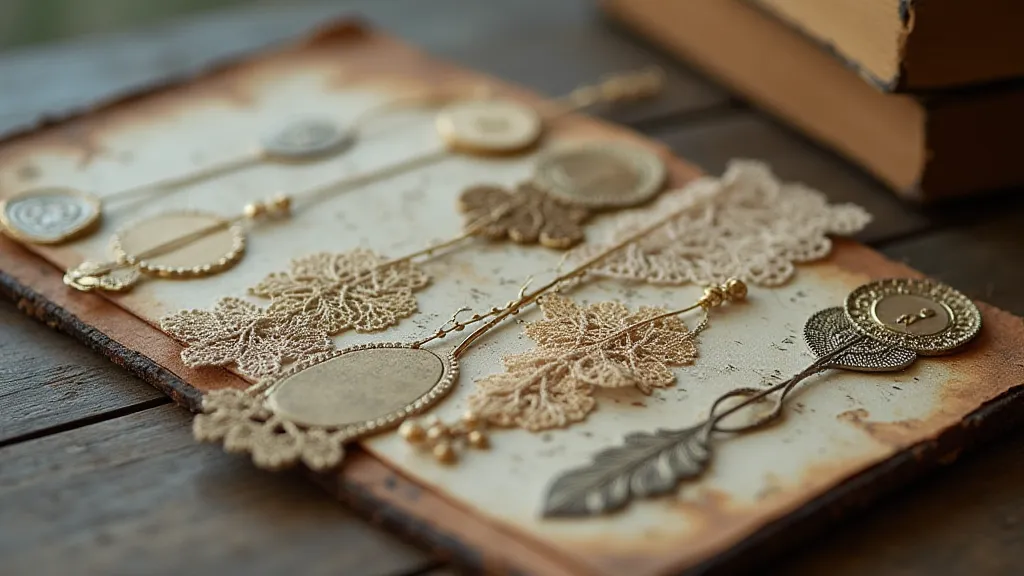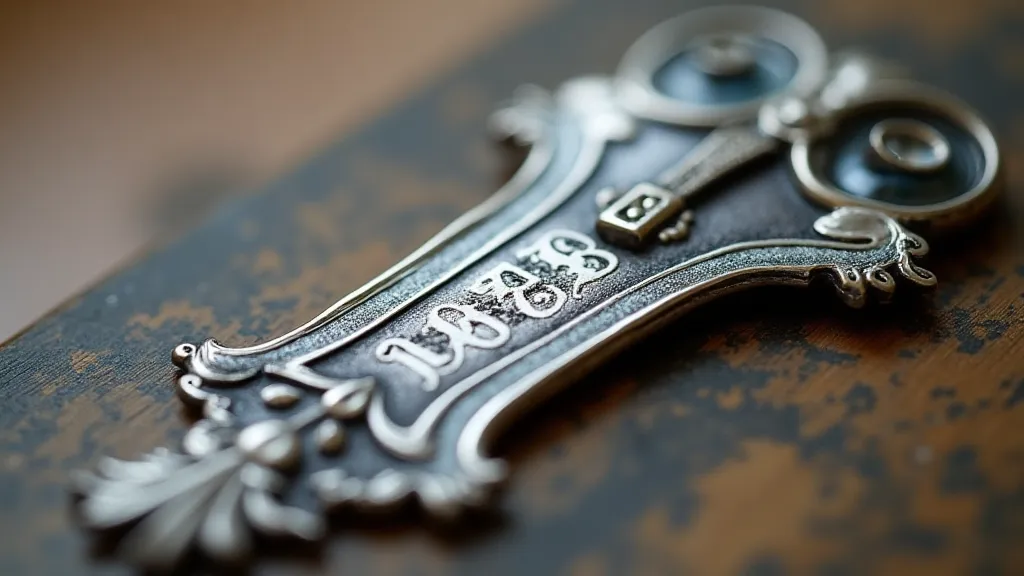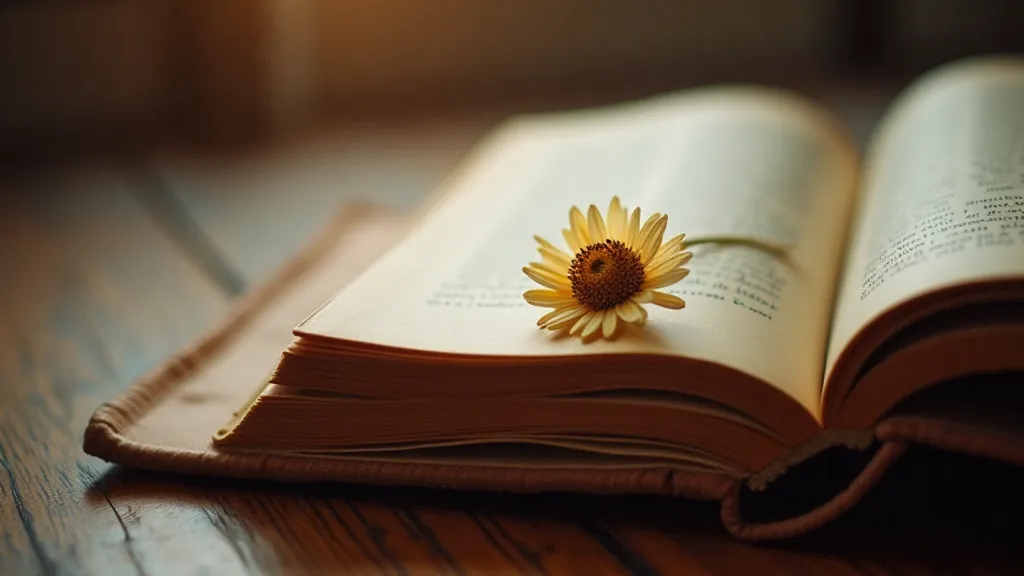The Silent Guardians: Bookmarks as Relics of a Fading Literary Ritual
There's a quiet dignity to a well-worn bookmark. More than just a utilitarian object, it's a silent guardian of a literary moment, a tangible echo of the reader's journey through a beloved story. It represents a ritual, a small ceremony of engagement with the written word that is slowly, inexorably, fading in our increasingly digital world. We’ve traded the gentle pressure of a finger holding a page for the cold tap of a screen, and with that shift, we’ve perhaps lost something precious – a deeper connection to the act of reading itself.
I remember my grandmother’s bookmarks. Not fancy things, mind you. Mostly they were pressed flowers, carefully sandwiched between layers of tracing paper and secured with delicate, brittle tape. Or faded slips of newspaper, clipped from advertisements or featuring particularly striking photographs. They weren’t curated collectibles; they were simply the tools of a devoted reader, marking her place in the stacks of novels that lined her shelves. Handling those bookmarks now, decades later, evokes a profound sense of loss – not just for her, but for a way of experiencing literature that feels increasingly rare.

A History Etched in Paper and Metal
The practice of using bookmarks stretches back centuries. Early manuscripts, those precious illuminated texts painstakingly copied by hand, were often marked with ribbons or small pieces of parchment. As printed books became more accessible during the Renaissance, so too did the variety of bookmarks. The 16th and 17th centuries saw the rise of intricately designed paper bookmarks, often bearing coats of arms or elaborate typography. The way typography was utilized wasn't just functional; it became an art form, reflecting the burgeoning sophistication of the age. It's fascinating to consider how much thought and artistry went into something so often overlooked today. The Victorian era, a period obsessed with sentimentality and elaborate detail, truly elevated the bookmark to an art form. Silk, lace, embossed leather, and even woven hair were incorporated into bookmarks – miniature testaments to affection and remembrance.
Metal bookmarks, particularly those crafted from silver or gold, also gained popularity. Often adorned with engraved scenes, religious imagery, or the initials of the owner, these bookmarks were treasured heirlooms, passed down through generations. Think of the elaborate silver filigree bookmarks of the Edwardian period, or the Art Nouveau designs with their flowing lines and organic motifs. These weren't mere placeholders; they were miniature works of art reflecting the aesthetic sensibilities of their time. The deliberate choices in design weren’t just about decoration; they spoke volumes about social status and personal taste, offering a glimpse into the lives of those who cherished them. In many ways, the bookmark became a silent testament to their literary aspirations – a quiet declaration of their engagement with the world of books.
The Decline of the Ritual
The rise of digital books and e-readers has undoubtedly impacted the popularity of physical bookmarks. While some e-readers offer bookmarking features, the act itself feels… distant. There's no tactile connection, no sense of preserving a specific moment in the narrative. The bookmark in a physical book becomes a companion, a quiet observer of your reading experience. It absorbs the faint scent of the paper, bears the subtle impressions of your fingers, and silently witnesses your emotional journey through the story. Consider, too, how the very design of a bookmark – the materials used, the artistry involved – influenced the overall aesthetic experience of reading. It was more than just a functional object; it was part of a carefully curated ritual.
This shift isn't solely about convenience. It speaks to a broader cultural change – a move away from tangible objects and towards ephemeral digital experiences. We’re increasingly comfortable with fleeting, disposable content, and the permanence of a physical book, and the small ritual of marking your place within it, feels almost… antiquated. This shift also affects how we perceive and value the physical act of reading itself. Is the digital scroll truly equivalent to turning a page, feeling the weight of the book in your hands, and appreciating the care that went into its creation?
Collecting the Echoes
Fortunately, there's a growing appreciation for vintage bookmarks amongst collectors. These aren’t just pieces of paper or metal; they are fragments of history, echoes of a bygone era. They offer a glimpse into the lives of previous readers, their tastes, their passions, their connection to the stories they cherished. A faded advertisement on a paper bookmark might reveal the fashion trends of the time. An embossed crest might identify the family who owned the book for generations. The study of these details, how certain fonts or artistic styles were used, even reveals insights into the lexicographer’s keepsake, demonstrating how typography shapes bookmark aesthetics and the broader literary landscape.
Collecting vintage bookmarks isn’t about accumulating a large quantity; it’s about appreciating the quality and the story behind each piece. Some collectors specialize in bookmarks from a specific era or featuring a particular motif. Others are drawn to the craftsmanship – the intricate detailing of a silver filigree, the delicate artistry of a hand-painted illustration. It’s about more than just possession; it’s about connecting with a piece of the past, a tangible link to a bygone era of literary appreciation. Imagine the conversations that transpired while reading the books these bookmarks once accompanied, the memories they hold within their fragile forms.

Caring for the Past
Vintage bookmarks, especially those made of paper, are fragile and require careful handling. Exposure to light, moisture, and pollutants can cause discoloration, brittleness, and deterioration. Storing bookmarks in acid-free sleeves or folders is crucial for preservation. Avoid direct sunlight and fluctuating temperatures. Understanding the cultural significance and nuances surrounding bookmarks, including the unspoken rules of literary etiquette, shows how they were once integral to demonstrating whispers of vanity and the pursuit of literary status.
For paper bookmarks that are particularly fragile or torn, a skilled paper conservator can often perform repairs. These repairs, while sometimes visible, help to stabilize the bookmark and prevent further damage. Metal bookmarks can be cleaned with a soft cloth and a mild silver polish, but be careful not to scratch the surface.
More Than Just a Marker
The humble bookmark is so much more than a simple marker of a page. It’s a symbol of a slower, more deliberate way of experiencing literature. It represents a connection to the physical book, a tactile engagement with the story. As we navigate an increasingly digital world, perhaps it's time to rediscover the quiet ritual of using a bookmark – not just as a practical necessity, but as a way to honor the enduring power and beauty of the written word. The act of inheriting a collection of bookmarks can feel like receiving a direct line to the passions and preferences of a former book lover, creating a powerful sense of connection and continuity. It's a form of literary legacy, showing how the bookworm’s legacy can be preserved through these small, tangible objects.
The next time you pick up a book, consider reaching for a bookmark. It’s a small gesture, but it's a way of keeping alive a fading tradition – a silent guardianship over the stories that shape our lives. For dedicated collectors, the meticulous process of documenting and cataloging these treasures is a labor of love, ensuring their preservation and sharing their stories with future generations – a testament to the curator’s eye and the dedication required to preserve these fragments of literary history.






